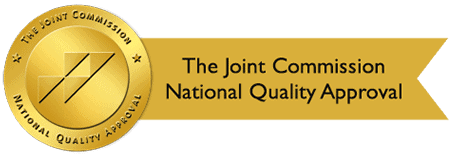By: Design for Change Recovery
Categories:
Understanding the Risk Factors of Relapse and How to Reduce Them
You are here:While each person’s recovery process differs, many of the relapse risk factors are similar. During recovery, a person must work on several aspects of daily life including self-awareness, self-care, and improving coping and communication skills. The stress of making so many changes at once often increases the risk of relapse.
Recovery from substance use is a lifelong process. Completing a rehabilitation program is only the beginning of a long process of growth, learning, and change. To avoid relapse, it is crucial to understand the risk factors of relapse so they can be prepared to cope with them if they occur.
What Are Relapse Risk Factors?
 Relapse is considered both an event and a process. Typically, people who relapse go through a process of thinking about it before actually taking action. In general, the process looks like this:
Relapse is considered both an event and a process. Typically, people who relapse go through a process of thinking about it before actually taking action. In general, the process looks like this:
- The individual begins fantasizing about past use.
- Fails to seek support or denies needing support.
- Begins associating with people and places linked to substance use.
- Displays behaviors that were common during their drug use.
- Stops taking maintenance medication.
Research shows that about 60% of people with substance use disorders eventually sustain recovery. However, many of these individuals go through more than one episode of relapsing. It is possible for people to relapse even when they have been in recovery for years, but the most vulnerable time is about three months after detox.
The most common relapse risk factors for people in recovery include:
- The severity of the addiction.
- The person’s coping skills, support system, and motivation.
- Co-occurring mental or physical health issues.
Reducing the risk of relapse begins by understanding that relapse does not mean failure. Relapse is common among people in recovery. What they do next is what matters. Are they able to cope with the situation by seeking support, or do they lose motivation and continue to use?
8 Most Common Causes of Relapse
Although relapse is part of the overall recovery process, it’s crucial to take it seriously and get back on track right away. According to the National Institute on Drug Misuse or inappropriate use (NIDA), relapse rates range from 40 to 60 percent. With that in mind, let’s look at some of the most common causes and better understand how to reduce the risk of relapse.
- Post-acute withdrawal – The most common cause of relapse involves emotional and psychological factors. Post-acute withdrawal symptoms (PAWS) include mood swings, anxiety, irritability, poor concentration, and sleep disturbances. The symptoms may overlap with depression, however, the PAWS symptoms improve over time.
- Stress – While in recovery, a person experiences high levels of stress. They want to prove their ability to succeed in recovery and often feel overwhelmed. These feelings can lead to self-medicating with drugs or alcohol.
- Insomnia – Insomnia is prevalent and persistent in early recovery. Studies show that it is five times higher among people in recovery than in the general population. Insomnia may cause high rates of relapse and last for months or years, according to researchers.
- Reversal of expected outcomes – When something happens that interferes with recovery goals, the feelings of failure and disappointment can send a person back to alcohol or drug use.
- Overconfidence or complacency – After maintaining sobriety for a continuous period, a person begins to think “I can handle one little drink.” This rationalization or overconfidence can lead a person into a situation they are not strong enough to handle. Relapse is usually the next step.
- Lack of focus; boredom – Experts agree that boredom is one of the main triggers for relapse. When a person’s mind is idle, it opens the door to tempting thoughts.
- Relationship issues – A person in recovery needs stability and support. If they are in a shaky relationship, a person in recovery can become distracted and fail to focus on maintaining sobriety.
- No relapse prevention plan – The desire to drink or do drugs can occur at any time. In the absence of a realistic relapse prevention plan, it won’t be easy to effectively manage the triggers when they appear.
Recovery takes time, dedication, motivation, planning, and support. The journey includes many detours, obstacles, and wrong turns here and there. Knowing what to expect along the way can help a person stay focused and reach their goals.
Learn Relapse Prevention Skills at Design for Change Recovery
The possibility of relapse should not keep you from believing that recovery is possible. If you are struggling with substance use and addiction, reach out to Design for Change Recovery. We will create a customized addiction treatment plan especially for you.
We emphasize relapse prevention as part of our addiction treatment approach. You’ll learn effective coping skills to help you manage triggers and avoid relapse. We also offer aftercare services to provide continued support and guidance as you continue your path to sobriety outside the program.
Contact Design for Change Recovery at our Lancaster, CA facility today to learn more about our treatment options.
Sources:
- ncbi.nlm.nih.gov/ – Relapse Prevention
- verywellmind.com/– What to Do After a Relapse


